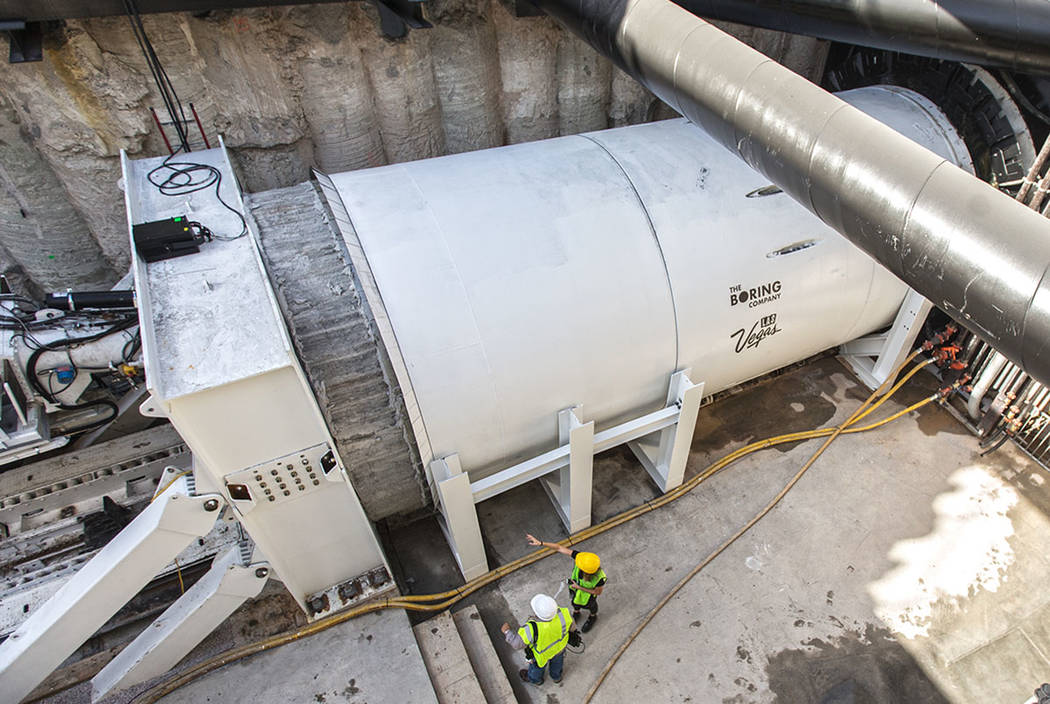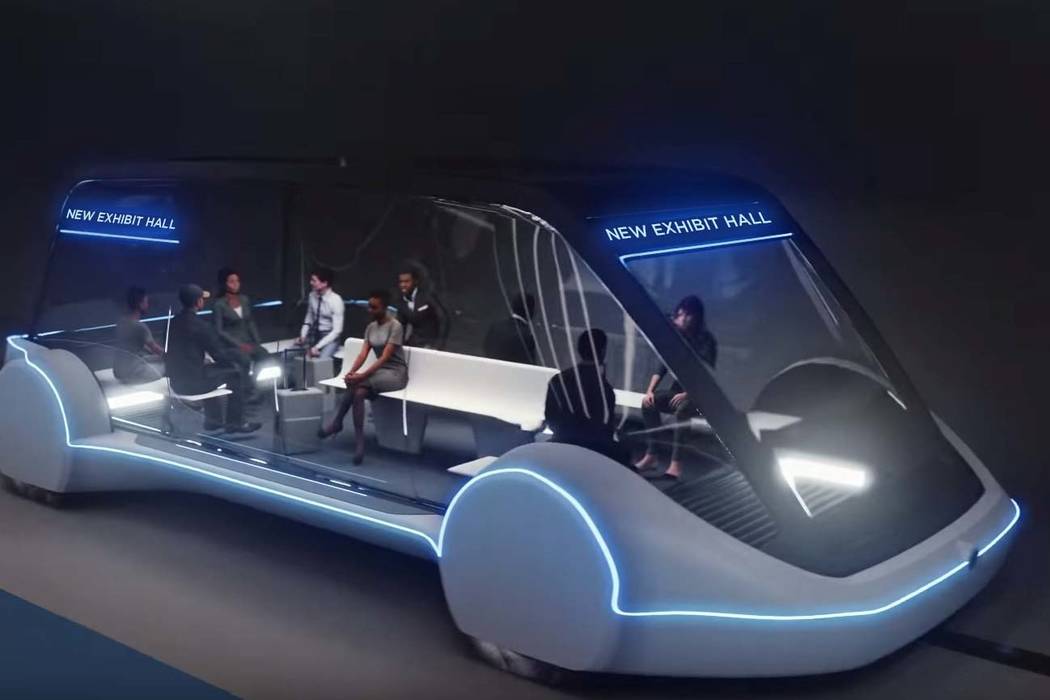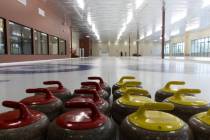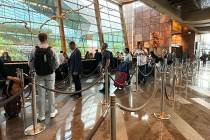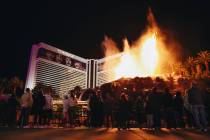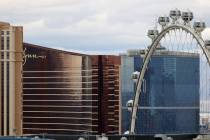As Boring project nears halfway point, public needs to know more
A landmark event is expected to occur near the end of this week when the digging machine used by The Boring Co. for the Las Vegas Convention Center’s $52.5 million people mover completes the first of two tunnels and emerges from underground.
While Boring and the Las Vegas Convention and Visitors Authority have shared some details about the people mover and its future, there’s still a lot the public doesn’t know about it. You’d think that, since the project is being paid for with public funds, all parties involved would go out of their way to be transparent about it.
The LVCVA has held up its end for the most part, but when its representatives have to yield to the contractor on technical details, Boring isn’t as forthcoming on the project.
Company officials occasionally agree to be interviewed, but they prefer to speak off the record or on background, which isn’t helpful to readers, since we won’t publish off-the-record comments. And knowing the source of the material helps people evaluate the context of remarks.
As of late last week, the machine had chewed through 3,700 feet of dirt along the 4,300-foot length of one tunnel, according to LVCVA spokeswoman Lori Kraft.
Once the big drill completes the tunnel, the machine will be disassembled piece by piece from the endpoint near the west end of the new West Hall under construction on Convention Center Drive. It will then be transported back to the starting point off University Center Drive near the east end of the South Hall, where it will be reassembled to begin a parallel tunnel.
Two tunnels are being built so shuttles can operate in different directions, minimizing the chance of a head-on collision.
While some wags were hoping the first tunnel would be completed a week ago to justify some kind of Groundhog Day emergence event, it wasn’t to be.
The people mover is set to be complete by the end of the year and available for use during CES 2021 in January.
Here are some things we know — and don’t know — about the people mover, occasionally referred to as the “Las Vegas Loop.”
■ The vehicles using the tunnels will be self-driving ones made from Tesla chassis. The largest vehicle will hold 16 passengers. What we don’t know is how many vehicles will be a part of the system and their capacity.
■ The system will have stops at the two endpoints and an underground station near where the North and Central halls converge. But how will passengers queue to get on board? No details of the loading process have been provided as yet.
■ LVCVA President and CEO Steve Hill has said that, during extremely busy times, several vehicles may be loaded simultaneously and platooned through the tunnel, almost like an unconnected subway train. How will that be managed? How closely behind the lead vehicle will others be, and how fast will the vehicles go?
■ Leaders have said numerous times that the Las Vegas Loop could become a showcase for a new mode of transportation citywide. Imagine a network of tunnels connecting various destinations along the Strip, the convention center, other properties’ large traffic generators, Allegiant Stadium, McCarran International Airport and other locations. Because the system provides programmed point-to-point service, it would be more convenient and efficient than a traditional subway that has to follow a route and make numerous stops before arriving at a destination.
How far behind the completion of the Loop would that project be? How much would it cost? How would it be funded? Is it realistic to tunnel beneath our resort infrastructure? Would the Department of Homeland Security even allow tunnels beneath the airport?
Boring’s innovative transit system could be a game-changer in public transportation for Las Vegas and beyond.
If only the developers would be willing to talk about it.
Contact Richard N. Velotta at rvelotta@reviewjournal.com or 702-477-3893. Follow @RickVelotta on Twitter.



